
A Ship's Mast - an outdated picture of stability
Years ago it was said that the human spine was responsible for carrying weight in the trunk and the comparison between it and the mast of a ship was often made. But once you look at this in reality and not written in an out-dated anatomy book, you will see that it is not very realistic. It would mean that an 80-kilogram person would have just under 790,000 N/m² (Newtons per square meter) pressure on the vertebral disk just under the L-5 (5th lumbar vertebra).
If we take this example of the mast of a ship further we would have nothing more than two muscles stabilizing the spine: the tension of the vertical muscles of the back and abdomen respectively. If this were the case, we would be placing yet more pressure on the lowest vertebral disc. If our design were truly so, it would be a wonder that so few herniated discs are documented, as this enormous pressure would be almost impossible to withstand!
Floating tension - learning from the elephant's trunk
An elephant can raise its trunk in the air even though it has no bone running through it. What makes this possible is an incredibly clever trick of nature: myofascial layers interwoven in the pattern of a double helix weave their way throughout the length of the trunk. When they are active, these layers give the trunk even more strength and length. The elephant can stretch its trunk high up in the air without a single bone to stabilize it.
And it is exactly this pattern that we find in the trunk of practically all vertebrates. For the human spine, the double helix works as a stabilizer. This pressure is converted into tension within the helical double fascia. The vortices are not pressing against one another but rather above one another creating a sort of floating tension.
Breath as a gateway to the opposing double helix
As an overview, we can see four layers of superimposed, opposing double helices. The two innermost layers are closely linked to respiration:
- Respiratory double helix: The deepest myofascial layer includes three main diaphragms: the base of the mouth, the diaphragm of breath and the pelvic floor. The first two are connected from the front (infrahyoid musculature, fascia pericardia), while the lower two are connected from the back (crus diaphragmatica) which run perpendicular to each other. Tension is transferred from one level to the next. The three diaphragms are enveloped by the transverse myofasical lining of the abdomen (transverse abdominus) and the chest (fascia and transversus thoracis). To imagine this as a double helix, we have to have to visualize this rather abstractly.
- Spiral myofascial lines: The next layer lays directly atop the deep myofasical layer of the respiratory double helix. In this case the spiral effect is easy to identify. The outer layer runs diagonally from the upper backside of the body to the frontal bottom side (Mm. Intercostales and Mm. Abdominis Externi). At the midline, it intersects with the opposite side and thus becomes the inner layer (Mm. Intercostales und Mm. Abdominis Interni). From there it continues from the upper front side to the lower back side. At the midline of the body (at the spinous process), it intersects once again at the opposite side and then continues running as the superficial layer.
The two opposing double helices form an inseparable myofascial and functional unit. The fascia runs as an unbroken line of tension throughout the entire helix. When a muscle contracts, it distributes this tension across the complete myofascial helix in which it is located and then transfers the tension to the other helix.
Breathing with floating tension for healthy, more elastic fascia
To be healthy, a muscles requires tension and relaxation. It is vital to have both of these aspects because only in this way can the fascia be nourished properly. To maintain elasticity, fascia needs to be stretched and relaxed. If it does not, it cannot maintain its innate elasticity. As the saying goes, use it or lose it.
The human torso requires constant stabilization in order to convert pressure into tension through this helical system. Only when this is working can the spine be protected from this load.
In order to coordinate this seemingly contradictory demand, each of the muscular parts associated with the said individual sections of the double helix stretch while other segments stretch. The result is a constant and well-distributed tension across the entire helix. But in each of these individual segments, muscular and elastic tension alternate in a pulsing manner.
The rhythm of this pulsing arises from the diaphragm, which is the strongest muscle of respiration. The deeper we breathe, the more vibration within the breath penetrates the more superficial helical myofascial layers of the torso. The breath brings life to seemingly static tension. This is why we are able to stay upright so long without fatigue. The intervertebral discs are protected from pressure loading.
Exercises to support stability and elasticity
With the following sequences you can systematically activate the four double helices. In doing so you can maintain spinal health, improve your posture and at the same time develop a lot of power for demanding yoga poses.
Bellows breath
Find an upright seat and make sure that your spine maintains its natural curvature. In order to maintain the natural lumbar curve (anterior pelvic tilt), it often helps to elevate your seat on a pillow, a block or a chair.
Place your hands on either side of your abdomen so that the thumb can easily reach the floating ribs. Inhale and let your belly relax and stretch outwards as your fill your lungs with air. On the exhale, draw your stomach inward from both above and below the navel (Fig. 1).
As you proceed inhaling passively and exhaling forcefully, start to observe the shape change of the body as you inhale and exhale. Keep practicing until you can sense fatigue in the inner layers of your abdominal muscles. You may also be able to recognize the activation of the double helix of respiration (pelvic floor, diaphragm and the base of the mouth) as you breathe.
Effect: This exercise strengthens the deepest layer of your abdominal muscles (M. Transversus Abdominus). This is your inner corset, enclosing the contents of your abdomen. This muscle works as the antagonist to the diaphragm in respiration. This powerful breathing exercise activates the entire double helix of respiration and brings vibration into the deep lines of fascia. This is the basis for which we establish floating tension in the torso.
Bellows breath in prone, supine and all-fours
Lay flat on your back. Place your hands on the upper abdomen as described before. Again, exhale forcefully while drawing the upper and lower abdomen inwards, and inhale passively (Fig. 2).
After a while, reverse your position with the ground by laying on your stomach. As you exhale you will try to life the entire abdomen above the floor and as you inhale you will let your belly fall back into the floor (Fig. 3).
After a few repetitions, switch to all-fours taking care to line up the knees and hips and the wrists and shoulders. Again, following the same procedure in a new perspective exhale with power and inhale passively. Keep going until you sense mild fatigue in the deepest layers of myofascial muscle (Fig. 4).
Effect: By changing your physical orientation you can intensify the activation of the double helix of respiration. You can quickly access, work and bring the transverse abdominis muscles to the point of mild fatigue.
Four-zone breathing
Return to an upright seat of your choice. Again pay attention to any changes you might want to make to maintain proper pelvic alignment. Place one fist on the lower abdomen between the navel and pubic bone. The other hand is placed opened on the upper abdomen. Breathe slowly. Draw the low belly inwards and breath into your hand with your upper abdomen so that your back seems to arch (Fig. 5).
Going further with your next inhale place your hands on the side body at the ribs. Breathe into your hands to lift the ribs laterally (Fig. 6).
Take the breath even further towards the back body. Place a hand between the shoulder blades and breath into that space. Your thoracic spine will likely round a bit.
Deepening the breath yet again, place a hand on your sternum and breathe into your hand as you chest lifts as you inhale (Fig. 7).
Start exhaling from the upper abdomen first. Then continue exhaling in the side body, the back body and the sternum. Use your hands as support to give you a sense of space and where your body can move. This is a great way to train your body to sense the movement of breath and to be more familiar with the muscular activation associated with it.
Keep going until you can clearly recognize the activity of the deep double helix. The opposing helices are directly recruited during the movement of respiration.
Effect: This exercise activates the deep double helix. The two opposing helices surround the ribcage and abdomen. This deep double helix is key in creating the floating tension needed in the torso.
Four-zone breathing in supine, prone and plank
Lie down on your back and continue the breath exercise as described above. By changing your orientation to a supine position you should be able to clearly sense into the back body as you breathe (Fig. 8).
Turn over onto your belly and continue the breathing exercise in a prone position. Here follow the movements with your hands and try to give as much time and space to each of the four areas (Fig. 9).
Finally set yourself up in the top of a pushup position, taking care to line up the shoulders and wrists. The exercise can be done on the forearms if this brings undue strain to the wrists. Again breath into the four walls evenly and deeply. (Fig. 10).
Effect: Again here you can train your deep double helix in different positions to acquire a feeling for your breath, regardless of where your body is in space.
Enjoy and have fun practicing!
Teacher: Dr. Ronald Steiner
Yogini: Kristen Sikorsky Racco
Photographer: Paul Königer
Apparel: OGNX
-
Super beitrag, werde ich bei nächster Gelegenheit mal ausprobieren.
Ich würde mich gerne noch ein wenig im Selbststudium den den Helices weiter aussernandersetzen. Hast Du neben Tom Myers (Anatomy [...] Super beitrag, werde ich bei nächster Gelegenheit mal ausprobieren.
Ich würde mich gerne noch ein wenig im Selbststudium den den Helices weiter aussernandersetzen. Hast Du neben Tom Myers (Anatomy Trains) eventuell irgendwelche Literaturempfehlungen?
Namaste-
oh, ich sehe grade, Du hast ganz neu ein entsprechendes Buch veröffentlicht. Sind dort auch Abbildungen oder Skizzen zu den Helices? oh, ich sehe grade, Du hast ganz neu ein entsprechendes Buch veröffentlicht. Sind dort auch Abbildungen oder Skizzen zu den Helices?
-
Hallo Hannes,
viel Freude. Das neue Buch enthält auch diesen Artikel und noch viele weitere.
- es ist mein Wunsch vom meisten was ich mache auch einen freien Zugang zu geben.
An einem mehr [...] Hallo Hannes,
viel Freude. Das neue Buch enthält auch diesen Artikel und noch viele weitere.
- es ist mein Wunsch vom meisten was ich mache auch einen freien Zugang zu geben.
An einem mehr anatomischeren Buch mit dem Verlauf der Helices arbeite ich gerade. Das wird sicher noch eine Weile brauchen.
genieße Deine Praxis
Ronald -
Hallo Ronald,
das klingt super! Vielen Dank.
Hannes Hallo Ronald,
das klingt super! Vielen Dank.
Hannes -
Viel Freude beim Lesen. Viel Freude beim Lesen.
-
-
Ich durfte die Sequenz in der Yogatherapiewoche im Februar 2019 kennenlernen und konnte binnen kurzer Zeit eine deutliche Zunahme der Stabilität der Mitte erfahren. Ich konnte mich 2 Monate später an [...] Ich durfte die Sequenz in der Yogatherapiewoche im Februar 2019 kennenlernen und konnte binnen kurzer Zeit eine deutliche Zunahme der Stabilität der Mitte erfahren. Ich konnte mich 2 Monate später an den Ringen hochziehen ;) du erinnerst dich Ronald wie ich noch wie ein Sack Kartoffeln an den Ringen hing;) Jetzt die Hintergründe zu lesen und an meine Patienten weitergeben zu können, ist für mich wie ein weiterer Schatz in meiner Yogakiste :) Danke dafür
-
Hallo Michaela,
genial. Ich war als Jugendlicher richtig schwächlich. Da machte ich genau diese Erfahrung. Als ich lernte meine Körpermitte bewusst einzusetzen war plötzlich Kraft da.
Viel Freude [...] Hallo Michaela,
genial. Ich war als Jugendlicher richtig schwächlich. Da machte ich genau diese Erfahrung. Als ich lernte meine Körpermitte bewusst einzusetzen war plötzlich Kraft da.
Viel Freude wünscht Dir
Ronald
-
-
hallo Ronald, also die 4 Raum Atmung ist genial.....in verschiedenen Körperlagen danke dafür :-) hallo Ronald, also die 4 Raum Atmung ist genial.....in verschiedenen Körperlagen danke dafür :-)
-
Wau. Freue mich. Danke Dir. Wau. Freue mich. Danke Dir.
-
-

Steffi Küter
at 08.08.2019Hallo Ronald,
ich finde diese 4 Raum-Atmung wunderbar. Sie in den verschiedenen Körperlagen auszuüben einfach nur spannend. Aber: Warum bleibt der Unterbauch davon unberührt? Ich habe ein extremes [...] Hallo Ronald,
ich finde diese 4 Raum-Atmung wunderbar. Sie in den verschiedenen Körperlagen auszuüben einfach nur spannend. Aber: Warum bleibt der Unterbauch davon unberührt? Ich habe ein extremes Hohlkreuz und stabilisiere mich damit, den unteren Rücken zu beatmen. Ich nehme diesen Raum einfach in deine 4 Raum Atmung als zusätzlichen Raum hinein. Aber ich würde gerne verstehen, warum du diesen Raum bewusst auslässt.
Danke für deine regelmäßigen Inspirationen!
Herzliche Grüße
Steffi-
Hallo Steffi,
das ist ja eine tolle Idee die Du hier hast. Ich werde das auch direkt ausprobieren.
Beim MTC Atem, Bandha, Bewegung war ich selbst leider noch nicht. Dort erklärt Ronald mehr zum [...] Hallo Steffi,
das ist ja eine tolle Idee die Du hier hast. Ich werde das auch direkt ausprobieren.
Beim MTC Atem, Bandha, Bewegung war ich selbst leider noch nicht. Dort erklärt Ronald mehr zum Thema Atem. Ich hab für ihn notiert, dass er möglichst bald einen genaueren Artikel dazu schreibt.
Namaste und herzliche Grüße
Ines - AYI Redaktion
-
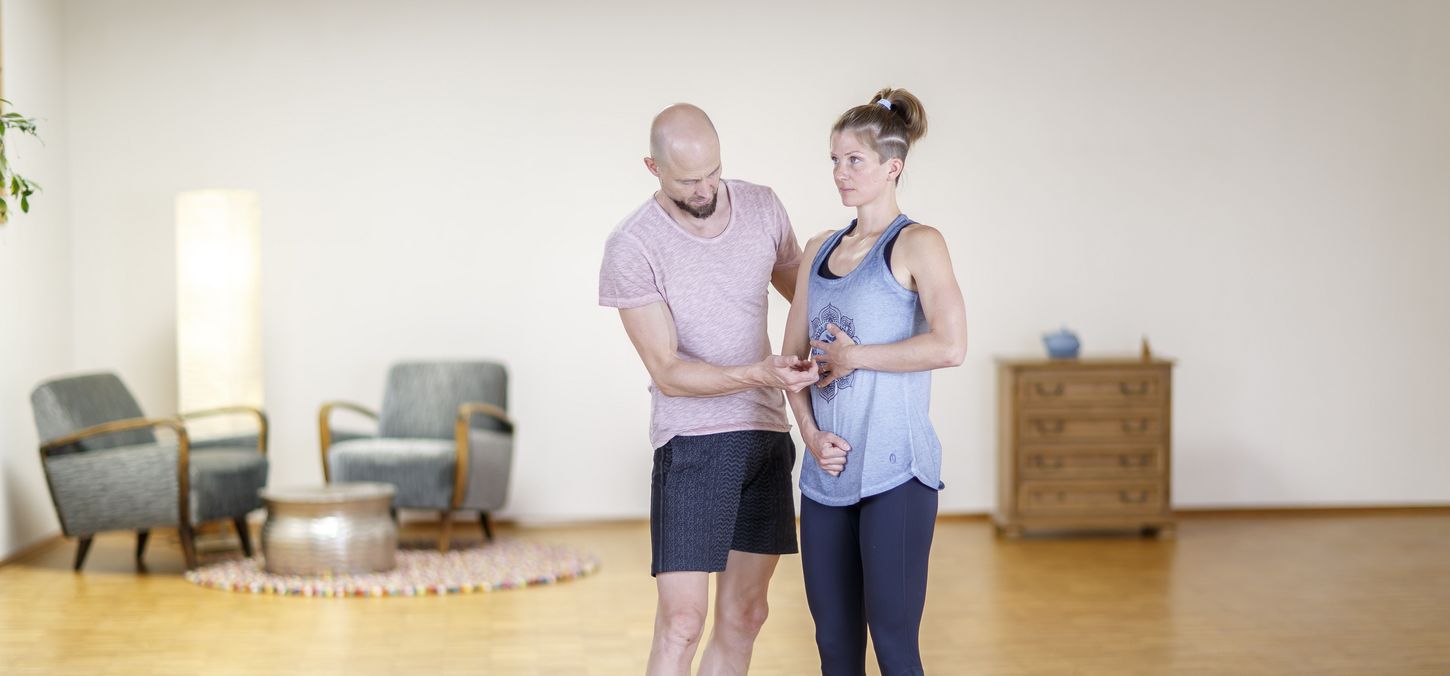

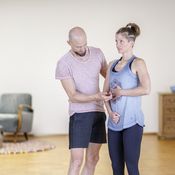
 Dr. Ronald Steiner
Dr. Ronald Steiner
 Kristen Sikorsky Racco
Kristen Sikorsky Racco
 Paul Königer
Paul Königer
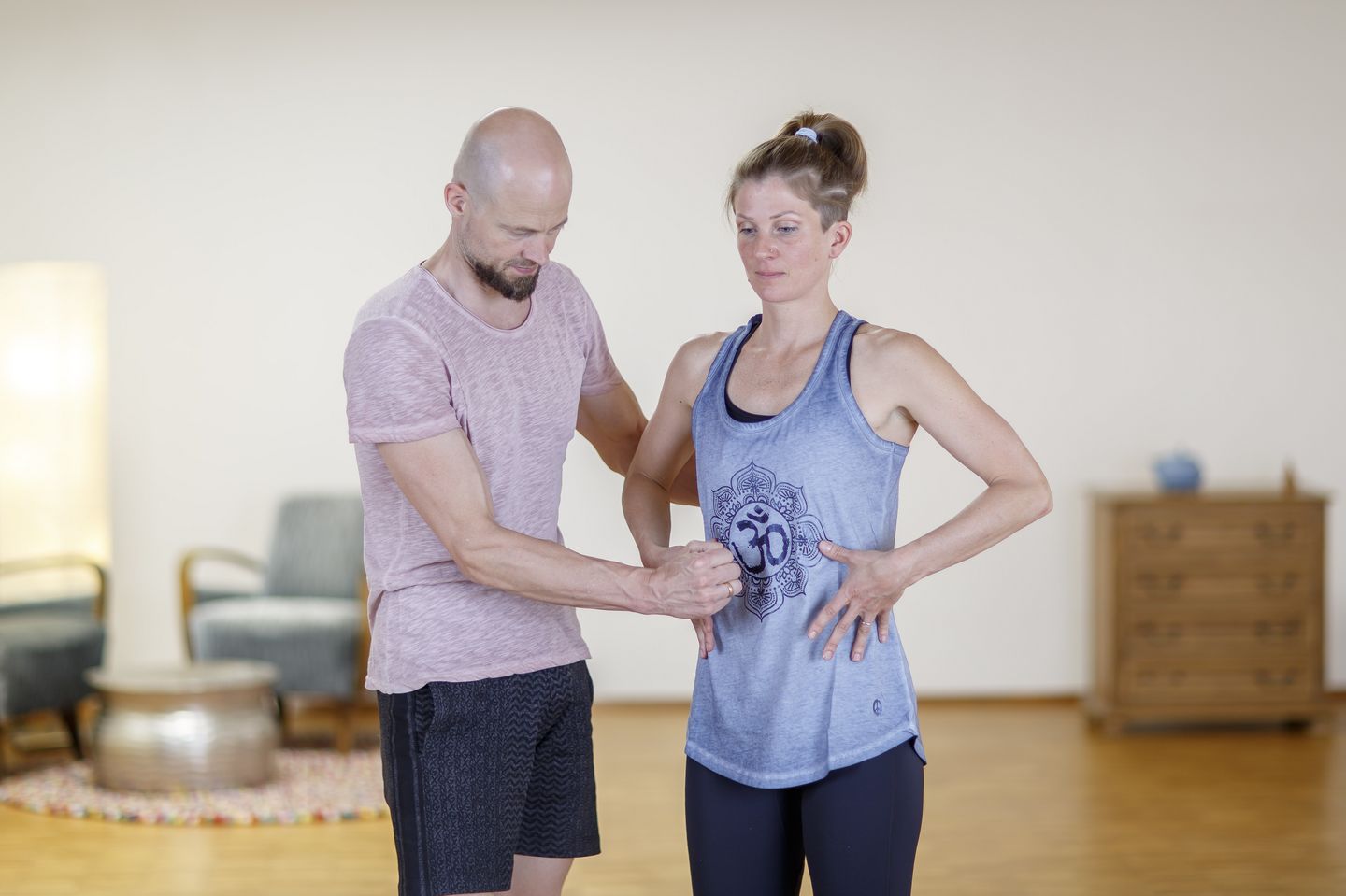
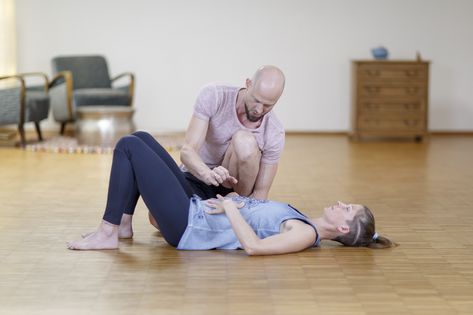
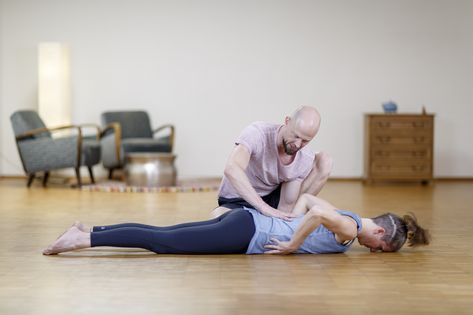
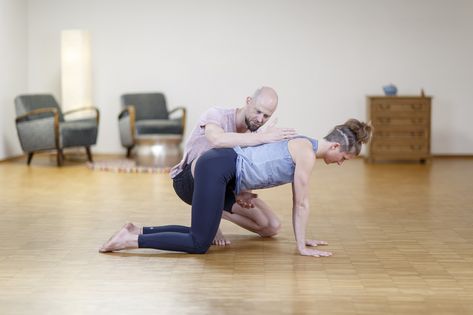
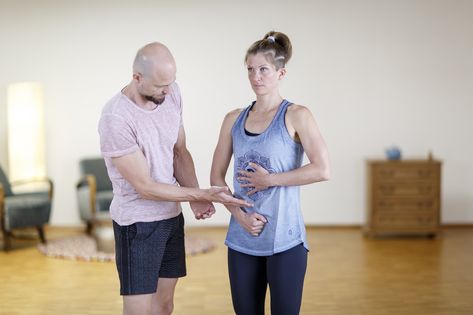
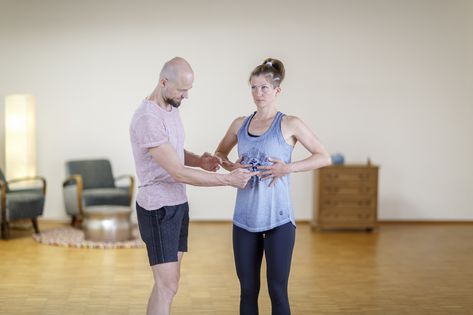
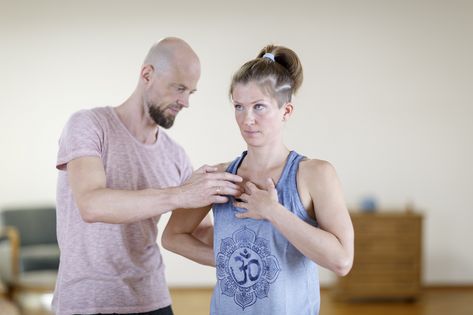
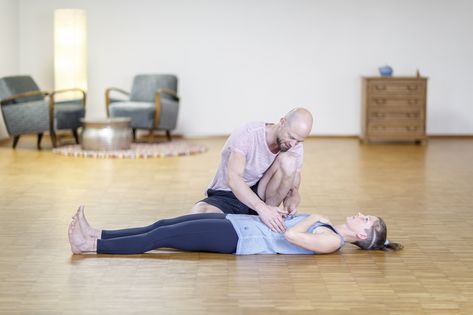
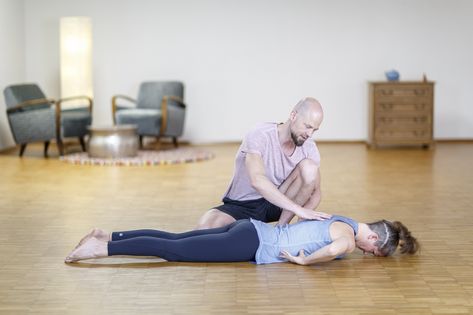
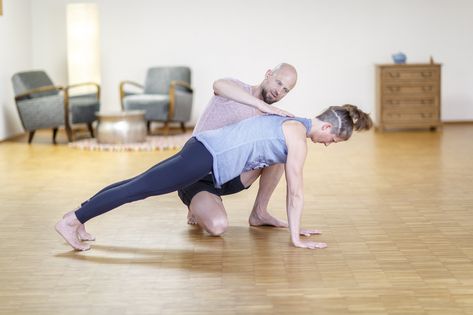







Messages and ratings